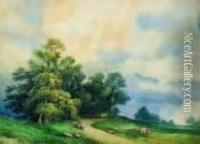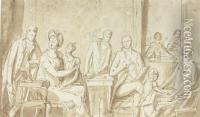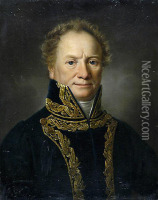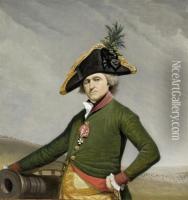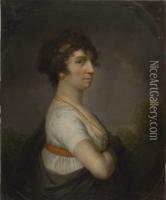Giovanni Battista De Gubernatis Paintings
Giovanni Battista De Gubernatis was an Italian painter and art historian, born in 1749 in Savona, then part of the Republic of Genoa. His period of activity falls within the age of Neoclassicism, which was predominant in Europe following the Baroque and Rococo eras. De Gubernatis was known for his contributions to the arts both as a creator and as a scholar.
De Gubernatis showed an early inclination towards the arts and was trained under the guidance of prominent teachers of his time. His work was influenced by the classical ideals of beauty, harmony, and proportion, reflecting the neoclassical aesthetics that were inspired by the art and culture of ancient Greece and Rome. This was a period when many artists sought to revive the noble simplicity and serene grandeur of classical antiquity.
Throughout his career, Giovanni Battista De Gubernatis was involved in various projects, including the creation of religious and historical paintings. His style was characterized by its clarity of form, use of restrained colors, and attention to detail, which was typical of the Neoclassical movement. He also engaged in the restoration of older artworks, which was an important practice at the time as it reflected the period's enthusiasm for rediscovering and preserving the artistic heritage of the past.
In addition to his painting, De Gubernatis contributed to the field of art history, although he is not as widely remembered for this aspect of his work as for his paintings. His scholarly pursuits would have involved the study and interpretation of art from various periods, particularly the classical and Renaissance eras that were greatly admired by his contemporaries.
Giovanni Battista De Gubernatis passed away in 1816. While he might not be as well-known today as some of his contemporaries, his work remains a part of the rich tapestry of Italian Neoclassical art. His contributions to both the creation of art and the study of art history during this transformative period in European art reflect the intellectual and cultural currents of his time.
